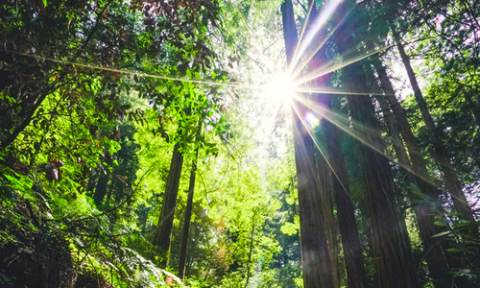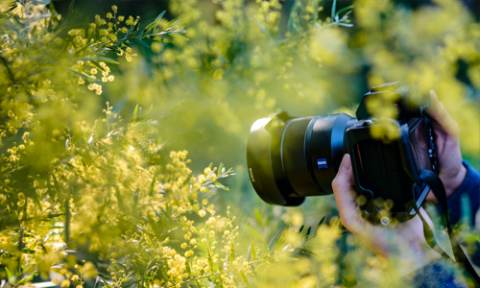
Light
Without light, you can’t get a photo so this is the most important element!
There are three ways to control the amount of light: sensor sensitivity (ISO), the lens aperture and shutter speed. To start with, set the ISO to 200; the higher the number, the more sensitive the sensor, so if you decide to go about 200 be careful that you don’t lose definition.
The lens aperture is how open it is to allow light in. To start with, set the camera to auto or aperture priority. As you become more confident, start to play around with it. F5.6 or f8.0 will give good depth of focus. For landscape photos choose a smaller aperture like f11 or f16, for portrait use a larger aperture such as f2.8.
The camera then automatically works out the correct shutter speed based on ISO and lens aperture settings.
A lot of newer mobile phones have these options, as well as slightly more fancy cameras.

Sunshine and shade
Ideally you should shoot with the sun behind you and try to make sure your own shadow isn’t in the picture. If you shoot into the sun, you’ll be left with harsh shadows, and your subject will be dark and shaded. The sun is softer early morning and evening which makes these times of day better to get the perfect shot.
Focus
Try to keep the focus area in the centre of the screen or viewfinder, and choose continuous focus if you can. This means that as long as you keep the shutter slightly depressed, the camera will keep the shot in focus.

Composition
There are different schools of thought when it comes to composition, but the most popular is applying the rule of thirds: place the subject on the intersection of one of the thirds.
Additional tips are to let the subject breath by leaving space around it (i.e. don’t fill the frame) and try to encourage the subject to look into the frame rather than away.
Leading lines
If you’re shooting landscape photographs then try to have an object in the foreground which will attract the eye and then lead it into the picture. Examples include a line of stones, a shape, a fence – something that connects to the background.
Holding the camera
To keep the camera, and your shot, as steady as possible always hold your camera with two hands and keep your elbows tucked into your sides.

Experiment
The best part about digital photography is that it’s free! So, try different sorts of compositions and to find what your own style is. From funny photos to serious landscapes, it’s all about having fun and being creative.




















